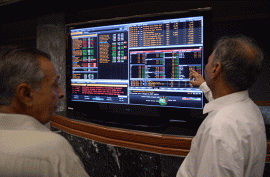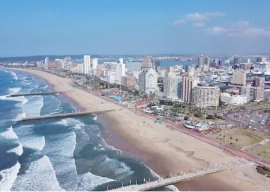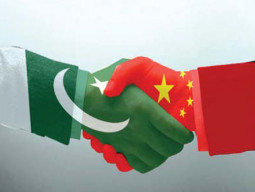
However, recovery can be made when the GDP growth rate bounces back to near 5% or above. A growth rate lower than this will not be satisfactory.
Yet the government is optimistic largely due to the International Monetary Fund’s (IMF) recent assessment. The Fund believes, “On the macroeconomic front, signs that economic stability is gradually taking hold are steadily emerging. The external position is strengthening, underpinned by an orderly transition to a flexible, market-determined exchange rate by the State Bank of Pakistan (SBP) and a higher-than-expected increase in SBP’s net international reserves.”
On the other hand, the picture is bleak as prices of essential food items and basic necessities are still out of the reach of the masses or the general labour class. Rising power and fuel prices, rupee depreciation and other IMF-suggested measurers will not ensure stability so easily, unless you keep many hungry. Offering ease to the lower and middle-income class now seems out of question.
The CPI stood at 11.04% in October 2019 and thus the accumulated inflation so far in 2019 is 10.32%. Breakdown shows that the increase in prices of perishable food items is 35%, beverages 20%, transport 16% and health 12%.
The IMF’s statement offers the government a chance to showcase its success. Meagre signs of stability have been dubbed as early victory. This helps in making a pun on the soaring prices of tomatoes and potatoes in the news each day.
This is creating a misjudged scenario by the policymakers and politicians on the basis of a statement issued by the IMF which, though based on facts, highlights a discrepancy between reality and the official data.
The persistently high inflation, hardly any signs of industrial growth, no job creation are among the factors which have remained the same. This poses the question as to how the country can measure economic recovery. Pakistan needs recovery in the real sense and not just visible in numbers, but on the streets.
Any growth not reflected on streets and visible only in data might not be recognised by the nation. It can be a political gimmick but not a tool to win the hearts and minds of voters.
Improvement in the country’s manufacturing and services sectors can play a key role in creating job opportunities and boosting incomes of many groups.
There have been few economic decisions to raise investment and income of working groups. Recently, the government increased the wheat support price to Rs1,365 per 40 kg from Rs1,300 – a step that may support farmers. However, more such measures should follow.
On the external front, Pakistan is expected to get a second tranche of $450 million within a month from the IMF, following its first review. To support the balance of payments, a good amount of dollars is likely to flow from multilateral donors.
Although these inflows will ease pressure on Pakistan’s foreign exchange reserves, the country will need the IMF’s approval to get these funds. This growth strategy, which is reliant on inflows from global lenders, has bound Pakistan to follow measures in the name of fiscal consolidation and balanced growth.
“Fiscal prudence needs to be maintained to reduce fiscal vulnerabilities, including by carefully executing the FY20 budget, implementing the new Public Finance Management legislation, and continuing to broaden the tax base by removing preferential tax treatments and exemptions, while protecting critical social and development spending,” said IMF mission chief Ernesto Ramirez Rigo.
Pakistan wanted to get rid of the Bretton Woods Institutions and tried to use resources from China and Russia. It raised the slogan of trade not aid, but it could not work out due to several reasons such as lack of industry, huge imports, skewed exports, etc.
Following this, it then fell back to its decades-old policies by seeking western support, which they abruptly provided.
Pakistan’s economy is approaching $310 billion, which is a meaningful size. However, the country failed to make a Malaysia-like anti-IMF move as its economy did not have the resilience to bear the jolt George Soros gave to the Far East.
Pakistan’s weaker economic situation merits bringing the house in order first, the first step for that is what the IMF calls fiscal stability.
The writer is a journalist and communications consultant
Published in The Express Tribune, December 9th, 2019.
Like Business on Facebook, follow @TribuneBiz on Twitter to stay informed and join in the conversation.


















COMMENTS
Comments are moderated and generally will be posted if they are on-topic and not abusive.
For more information, please see our Comments FAQ